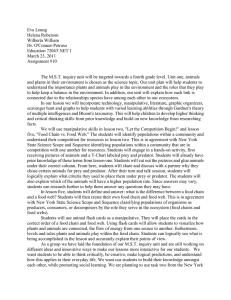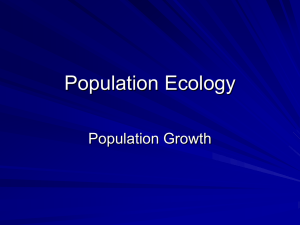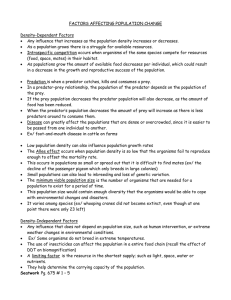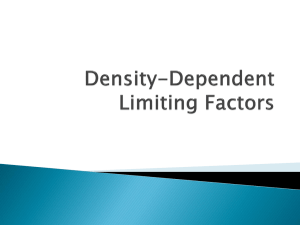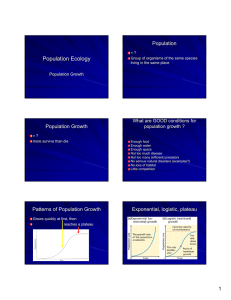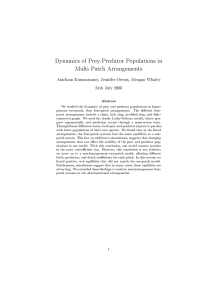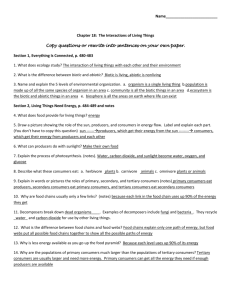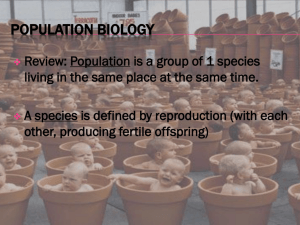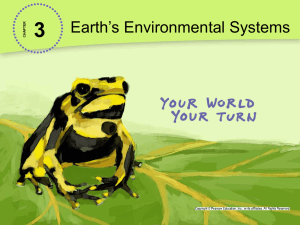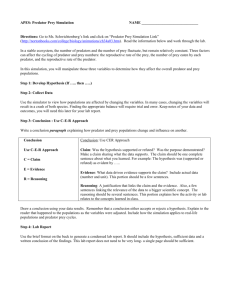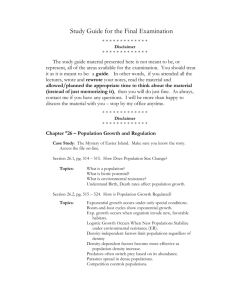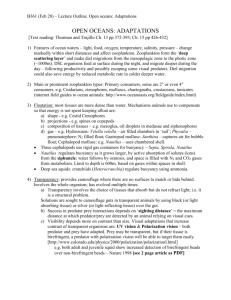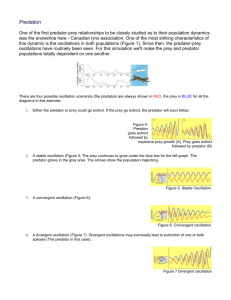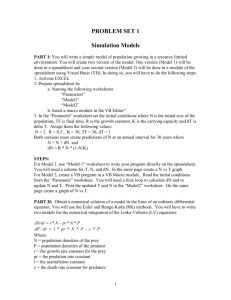Notes: Population Growth and Regulation
advertisement
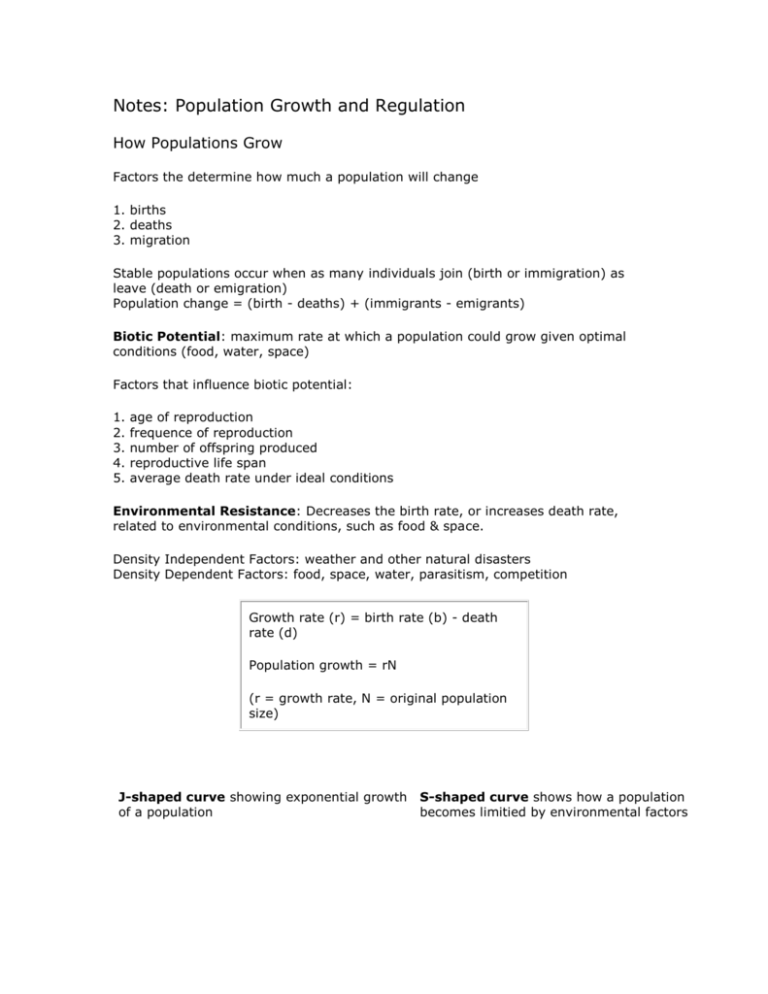
Notes: Population Growth and Regulation How Populations Grow Factors the determine how much a population will change 1. births 2. deaths 3. migration Stable populations occur when as many individuals join (birth or immigration) as leave (death or emigration) Population change = (birth - deaths) + (immigrants - emigrants) Biotic Potential: maximum rate at which a population could grow given optimal conditions (food, water, space) Factors that influence biotic potential: 1. 2. 3. 4. 5. age of reproduction frequence of reproduction number of offspring produced reproductive life span average death rate under ideal conditions Environmental Resistance: Decreases the birth rate, or increases death rate, related to environmental conditions, such as food & space. Density Independent Factors: weather and other natural disasters Density Dependent Factors: food, space, water, parasitism, competition Growth rate (r) = birth rate (b) - death rate (d) Population growth = rN (r = growth rate, N = original population size) J-shaped curve showing exponential growth of a population S-shaped curve shows how a population becomes limitied by environmental factors This population has not yet reached its carrying capacity. Carrying Capacity: the maximum size of a population that an area can support Boom and Bust Cycles Rapid population growth followed by a massive die-off Populations that are influenced by seasonal weather patterns, such as cold and drought Predator-Prey Cycles Most populations fluctuate in cycles. The prey population rises, causing the predator population to also rise. Predators then overfeed on prey, causing the prey population to drop, Once the prey population drops, the predator population drops due to lack of food. The cycle repeats indefinitely. Competition Resources limit the size of populations as individuals compete Interspecific competition: occurs between members of different species Intraspecific competition: occurs beweeen members of the same species Scramble competition: free-for-all, plants disperse seeds and as they grow they choke out other seedlings Contest competition: social interaction in animals that leads to the gaining of resources Contest competition: social behaviors, territoriality Dominance heirarchies: pecking orders within members of a species, dominant individuals get more resources or mating priveleges Simulation of Predator Prey Interactions Population Patterns in Space and Time Distributions Clumped Random Uniform Survivorship curve Early loss Constant loss Late Loss
